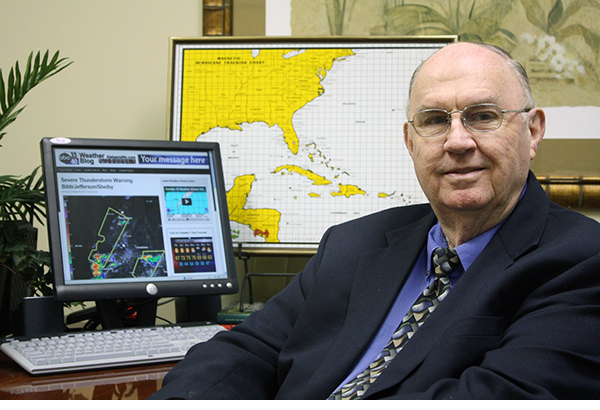Halsey’s Typhoons
On the morning of the December 17, 1944, the powerful U.S. Third Fleet under Admiral Bull Halsey had just won the Battle of Leyte and was steaming east to get out of range of Japanese bombers. Five hundred miles east of Luzon, U.S. oil tankers were waiting to refuel the fleet. Halsey had received a weather report that there was a typhoon four hundred miles to his east, moving north. The powerful storm was actually just 120 miles away. Halsey believed his course to the refueling area would avoid the dangerous typhoon. As weather conditions deteriorated during the day, Halsey ordered his fleet, which covered a thirty mile diameter area, to move northwest, thinking it would take them out of harm’s way.
It was difficult to keep track of typhoons in the Pacific during World War II. Large stretches of ocean are unbroken by islands, so there are few observation locations. In the 1940s, there were no satellites. Halsey had received an incorrect forecast. Powerful Typhoon Cobra was beginning to strike the task force when the fueling operation began. By nightfall, the fueling operation was abandoned and the fleet was trying to outrun the typhoon. Over the next 24 hours, Halsey made several maneuvers that managed to put much of his fleet right into the middle of the storm.
By the morning of December 18th, the fleet was fighting for its life. There was mass confusion as the ships rolled on monstrous waves as high as 60 feet and dealt with shrieking winds 145 mph and gusts to 185 mph in the Philippine Sea. The central pressure in the storm was estimated to be 26.30 inches.
The storm sank three destroyers and numerous other smaller ships. The carriers were damaged and nearly 150 planes were destroyed or blown overboard. Three destroyers and numerous other ships were sunk by the storm. 778 sailors and marines died and 146 aircraft were destroyed. Winds and high seas tore life vests from the backs of some survivors.
The encounter with the typhoon was more damaging to the Fleet than many battles with the Japanese. A court of inquiry found that responsibility for the disaster did lie with Halsey, but that no offense had been committed. The court made ten recommendations to improve weather forecasting services. But the recommendations were not implemented in time to prevent a second disaster with Halsey’s fleet later.
Category: Uncategorized















